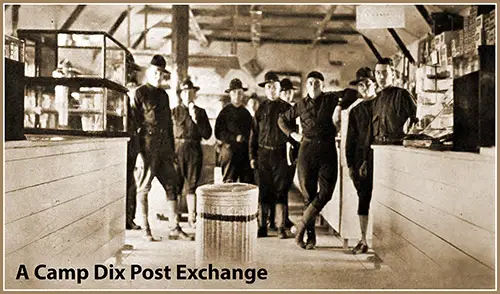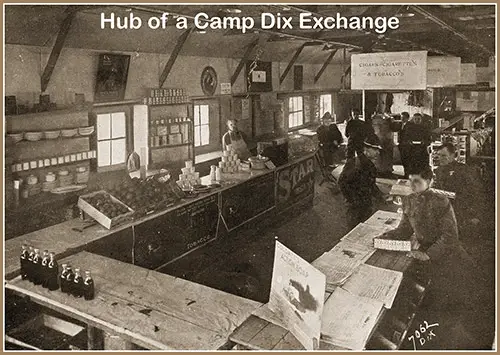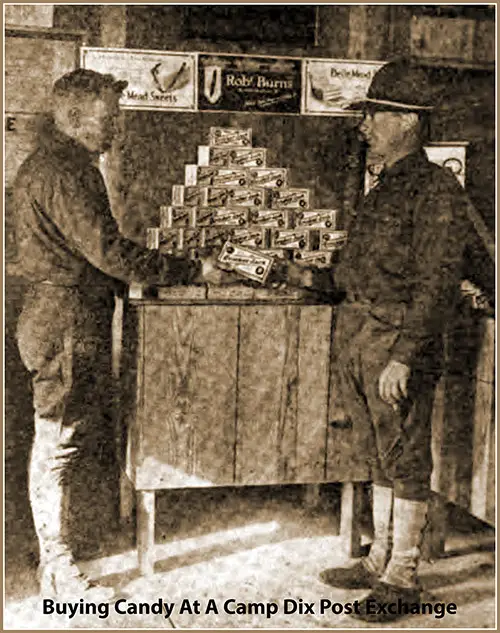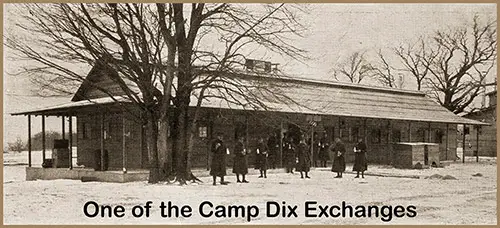The Camp Dix Post Exchange

Scene at a Camp Dix Post Exchange. Camp Dix Described and Photographed by Roger Batchelder, 1918, p. 43. GGA Image ID # 1ce8443416
It is an old axiom that the soldier spends his money freely. He surely earns his pay, and if he has no one dependent upon him, it is only natural that he obtains from it the greatest possible comfort.
A system has long been in force in the army, by which the soldier can spend his money and still have it, strange as the statement may seem. In every regiment there is a post exchange, a military department store.
This is supervised by the authorities and is in charge of an officer assisted by several enlisted men. The profit-sharing scheme provides that the establishment be run at cost and that all profits revert to the companies which patronize the exchange.

Hub of a Camp Dix Post Exchange. Character Building, 1918, p. 12. GGA Image ID # 1cec26e327
This money goes into the company fund, which is in the hands of the company commander. The regulations provide that, at his discretion, each company may expend the money to buy for the organization such articles as are not procurable by requisition.
If Company B wants a piano, salt-cellars for the mess, a library, or practically any reasonable source of comfort or amusement, the captain will buy them from this fund. Delicacies for the mess, or "big feeds," as the soldiers call them, are also permitted.

Some People Think That the Soldiers Don't Eat Much Candy, and Others Believe They Should Not Eat Any Candy. Soldiers Consume an Enormous Quantity of Candy. They Enjoy and Appreciate Every Morsel of It. Here Is a Picture of Soldiers at Camp Dix, Wrightstown, N. J. Anyone Can See What They Are Doing. Cracker Jack and Lowney's Are "Going Across "Like Hotcakes. The International Confectioner, December 1917, p. 50. GGA Image ID # 1ce7fbbfca
For instance, if the 10th regiment is composed of twelve companies, and the post exchange's yearly profits were sixty thousand dollars, each company would receive five thousand dollars for its company fund.
This is not a surprising total when one considers that the monthly sales of the Camp Dix exchanges average over a hundred thousand dollars.
The soldier can procure practically anything that he needs or desires at the exchange, such as tobacco, milk, shoestrings, post-cards, safety- razors, etc. The stock which those stores have on hand is astounding.
If anything is not on sale, the exchange officer will procure it if a request is made. One picture shows an exchange of the Camp Dix depot brigade. The men who are not wearing hats are the clerks, detailed from their companies for the purpose.

One of the Seriall Numbered Camp Dix Exchanges. Character Building, 1918, p. 12. GGA Image ID # 1cec2dccc8
